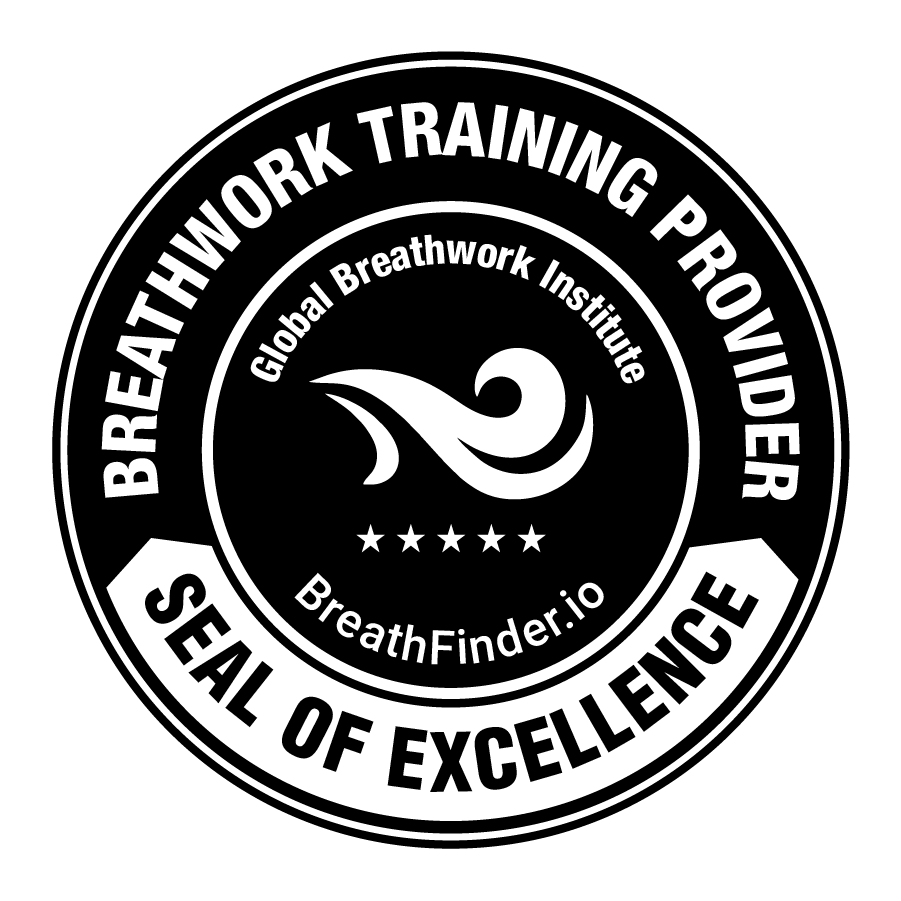Safety Standards for Online Practices
Ensuring Breathwork Accountability and Informed Choices
Introduction:
As breathwork continues to grow in popularity, the digital space has become an essential platform for both practitioners and participants. Online breathwork sessions and programs provide flexibility, allowing individuals to connect globally and practice from the comfort of their homes. However, this shift to virtual sessions also brings new challenges, particularly in ensuring safety, accountability, professionalism, and ethical practice. Without in-person supervision, facilitators and participants must adhere to clear standards and guidelines to ensure breathwork is conducted safely and responsibly.
The Rise of Online Breathwork Practices
Breathwork is gaining global popularity and digital platforms have made it easier to access guided sessions and connect with facilitators worldwide, especially for those facing geographical, financial, or personal barriers. However, this shift to virtual sessions brings new challenges, particularly around safety and supervision. Unlike in-person sessions, online formats lack real-time observation, raising concerns about participant safety and ethical facilitation.
Understanding how to navigate online breathwork spaces responsibly is crucial for both facilitators and participants. In this article, we explore the do’s and don’ts of online breathwork safety, accountability for providers, and key factors to consider before signing up for an online session, workshop, or course. By following these guidelines, breathwork can remain a transformative and safe experience for all involved.
Table of Contents

Expanding Access While Prioritizing Safety
While the convenience of online breathwork is undeniable, safety concerns cannot be overlooked. Breathwork can be an emotionally and physically intense practice, sometimes leading to strong physiological reactions such as dizziness, hyperventilation, or emotional release. Without proper guidance and oversight, participants may be at risk of adverse experiences, particularly if they have pre-existing health conditions.
Facilitators must take proactive steps to uphold safety standards in online sessions. This includes:
- Pre-session Screening: Even in large online group settings, facilitators should collect essential health information through intake forms or disclaimers to help participants self-assess their suitability.
- Clear Safety Guidelines: Participants should be informed about potential risks, contraindications, and modifications to adapt practices to their needs.
- Informed Consent: Transparency about the session structure, techniques used, and potential effects ensures that participants enter the experience with awareness and agency.
- Emergency Preparedness: While facilitators may not be physically present, providing guidance on what to do in case of distress or adverse reactions is crucial.
By integrating these measures, online breathwork sessions can maintain high ethical and professional standards while continuing to make this powerful practice accessible to a broader audience.
Ethical Breathwork Accountability & Responsibility
Ethical breathwork providers must take ownership, accountability, and responsibility for creating a professional, safe, and transparent environment, especially in an online setting where in-person cues are limited. Here’s how responsible providers can uphold these principles:
- Ongoing Education: Stay updated on best practices, trauma-informed care, emotional safety, and group facilitation while engaging in continuous professional development.
- Personal Integrity: Embody the principles you teach, demonstrating authenticity and integrity to build trust and credibility.
- Supervision and Support: Seek ongoing supervision to reflect on your practice, address challenges, and improve your skills.
- Informed Consent: Clearly outline potential risks, contraindications, and session structure before each session to ensure informed consent, which must be obtained in writing.
- Client Empowerment: Encourage clients to listen to their bodies, adjust practices accordingly, and respect their own pace and comfort level.
- Confidentiality: Protect personal information in compliance with privacy laws such as GDPR and HIPAA to maintain strict confidentiality.
- Professional Certifications and Licensing: Hold certifications from recognized accrediting and verification bodies (e.g., GPBA, IBF, GBA) and be transparent about qualifications and experience.
- Adherence to Ethical Guidelines: Uphold ethical standards that safeguard participant confidentiality, respect boundaries, and prevent undue pressure.
- Emergency Protocols: Establish clear emergency procedures, especially for online sessions, ensuring participants know how to manage discomfort, panic, or physical symptoms.
- Transparency in Marketing: Provide accurate, clear session descriptions that set expectations while avoiding misleading claims.
- Regular Feedback and Self-Reflection: Actively seek client feedback through surveys or discussions and use it to improve your practice.
- Proper Screening and Health Assessments: Conduct thorough screening for physical and mental health conditions, medications, and trauma histories to ensure participant safety.
Confidentially
Breathwork providers must protect any personal information shared by participants during sessions. This includes ensuring compliance with relevant data protection regulations, such as GDPR (General Data Protection Regulation), HIPAA (Health Insurance Portability and Accountability Act), and other applicable laws, depending on the client’s location. Providers should recognize the importance of confidentiality, particularly when clients share sensitive information about their health or emotional well-being.
Key Data Protection Regulations:
- GDPR Compliance (EU/EEA): For clients within the EU or EEA, providers must comply with GDPR, which requires explicit consent for data collection, transparent data usage, and clients’ right to access their data. Personal health information should only be collected when necessary and must be securely stored.
- HIPAA Compliance (United States): For clients in the United States, providers handling health-related information must adhere to HIPAA regulations, ensuring the confidentiality and security of health records. HIPAA mandates secure handling and storage, with strict rules on information disclosure.
- PIPEDA (Canada): In Canada, PIPEDA governs how personal data is collected, used, and disclosed, requiring consent, transparency, and security in managing personal information.
- UK GDPR & Data Protection Act 2018 (United Kingdom): Post-Brexit, the UK follows the GDPR rules and the Data Protection Act 2018, which ensures lawful processing of personal data and grants individuals the right to control their information.
- Australian Privacy Act 1988: In Australia, this act regulates personal data handling, focusing on transparency, security, and individuals’ rights concerning data collection and access.
- LGPD (Brazil): Brazil’s LGPD, modeled after GDPR, regulates the collection, processing, and sharing of personal data, requiring consent, security, and respect for individuals’ data rights.
- POPIA (South Africa): POPIA governs the collection, storage, and processing of personal data in South Africa, emphasizing the need for lawfulness, security, and transparency.
- DPDPA (India): India’s Digital Personal Data Protection Act (2023) focuses on consent-based data collection, security measures, and cross-border data transfers.
- PIPL (China): China’s Personal Information Protection Law (PIPL) imposes strict data protection standards, including data localization, security controls, and individual rights protections.
Respecting Boundaries: Practitioners must respect participant boundaries and confidentiality, ensuring the privacy of health conditions, personal details, and session experiences. Adhering to data protection laws such as GDPR, HIPAA, PIPEDA, UK GDPR, and the Australian Privacy Act helps safeguard clients’ rights. These regulations should be embedded into practice and inform how providers handle sensitive information.
Addressing Safety Challenges in Free Online Breathwork Sessions
Free online breathwork sessions can face unique safety challenges due to larger group sizes and limited time for individualized attention. With the goal of accessibility, these sessions often struggle to provide the necessary participant screening and tailored assessments, which can lead to potential risks, particularly for those with diverse health concerns.
Facilitators may lack the resources to thoroughly address individual needs, making it harder to ensure that participants are suitable for the breathwork techniques being used. This increases the likelihood of adverse reactions or participants engaging in practices that aren’t appropriate for their condition.
While free sessions are designed to make breathwork more accessible, they must still uphold essential safety standards. Facilitators should implement clear safety guidelines, provide disclaimers about possible risks, and use safer breathwork techniques that minimize potential harm, even in time-constrained settings. Prioritizing these factors ensures that participants can experience the benefits of breathwork while reducing the likelihood of negative outcomes.
What to Look for in a Breathwork Provider
Before committing to a breathwork event, workshop, program or course, especially online, it’s important to verify the provider’s credentials, safety measures, and ethical standards. Here’s a checklist to guide your decision:
- Certification and Credentials: Ensure the provider holds recognized qualifications and certifications that align with industry standards. They should have ample experience leading sessions, particularly online, and be transparent about their training background.
- Ethical Guidelines: A reputable breathwork provider follows strict ethical standards, including confidentiality, informed consent, and respect for participant boundaries. Verify whether they outline these principles on their website or in communications.
- Client Testimonials and Reviews: Look for authentic testimonials from past clients. Positive reviews offer insight into the provider’s experience, professionalism, safety protocols, and overall approach to breathwork.
- Safety Precautions: The provider should clearly outline safety measures and contraindications for both in-person and online sessions. They should ask about your health history to ensure the practice is suitable for you.
- Trauma-Informed Practice: Ensure the provider is explicitly trauma-informed. This means they are trained to support participants through emotional or traumatic experiences with care and understanding.
- Clear Structure and Agenda: A professional provider will clearly define the session structure, including duration, expectations, and preparation guidelines. Avoid providers who are vague about these details.
- Aftercare and Integration Support: Ask whether the provider offers follow-up support or integration resources after the session. A responsible practitioner will offer guidance on how to process your experience and check in with participants.
- Cancellation and Refund Policies: Before paying for a workshop, program or course, confirm the provider’s cancellation and refund policies to avoid any misunderstandings.
- Transparency: Look for clear, honest communication regarding their methods, fees, and session expectations. A reputable provider should always be upfront about these details.
- Ethical Standards and Code of Ethics: Check if the provider adheres to strong ethical standards regarding consent, confidentiality, and inclusivity. A published Code of Ethics is a strong indicator of professionalism.
The Do’s and Don’ts of Breathwork Safety for Online Practices
Breathwork practices require a careful and thoughtful approach to ensure participants’ safety, comfort, and well-being. It’s essential that providers and participants are mindful of various factors, from creating a safe, private environment to respecting personal boundaries and ensuring proper preparation.
By adhering to best practices, such as ensuring clear instructions, following trauma-informed approaches, and using secure online platforms, breathwork sessions can be both effective and supportive. Equally important is recognizing the potential risks and avoiding practices that could harm or overwhelm participants, like pushing them beyond their comfort zone or offering techniques that are unsuitable for their level. By following these guidelines, breathwork experiences can be both transformative and healing.
Do's for Breathwork Clients
- Ensure a Safe and Private Environment: Breathwork can evoke strong physical and emotional reactions, so it’s important to practice in a calm, private space where you feel secure. Take time to prepare your environment ahead of the session, minimizing distractions and interruptions to create a comfortable and supportive atmosphere.
- Choose Certified, Qualified Providers: When selecting a breathwork instructor, ensure they have recognized certifications and verification from reputable organizations like GPBA, IBF and BreathFinder Global Breathwork Alliance . They should be transparent about their training and experience, confirming they are equipped to guide you safely through the practice.
- Assess Your Readiness: It’s essential that you share relevant health history, emotional state, and experience level with your instructor before the session. This helps them tailor the practice to your individual needs and ensures the techniques are safe and appropriate for you.
- Request Clear Instructions and Guidelines: Breathwork practices vary in intensity, so make sure the instructor provides clear, step-by-step guidance. You should understand the techniques, pacing, and safety precautions before the session begins to ensure you’re comfortable and prepared.
- Promote Integration and Aftercare: A responsible provider should offer follow-up resources or integration support after the session. This may include emotional support or additional tools to help you process your experience. Don’t hesitate to reach out for guidance if you need it after your session.
- Look for a Trauma-Informed Approach: Breathwork can sometimes release stored trauma, so it’s important to ensure the instructor is trained in trauma-informed practices. This helps ensure that emotional releases are managed safely, and that you feel supported throughout the experience without feeling overwhelmed.
- Use Secure Online Platforms: If you’re attending an online session, make sure the provider uses secure, reliable platforms that protect your privacy. Your instructor should also provide guidance on how to safeguard your personal data and minimize any technological disruptions during the session.
Don'ts for Breathwork Clients
- Don’t Push Yourself Beyond Your Comfort Zone: Breathwork should be a self-paced experience. If at any point you feel overwhelmed, lightheaded, or uncomfortable, slow down or stop. Listen to your body and honor your limits.
- Avoid Breathwork if You Have Certain Medical Conditions Without Consulting a Professional: Conditions such as cardiovascular issues, respiratory disorders, severe trauma, or pregnancy may require modifications. Always consult a healthcare provider before engaging in intense breathwork practices.
- Don’t Expect Instant or Miraculous Results: While breathwork can be transformative, it is not a cure-all. Avoid providers who make exaggerated claims about instant healing or life-changing results after a single session. Progress takes time and consistency.
- Don’t Participate in an Unsafe or Distracting Environment: Engaging in breathwork in a noisy, public, or unstable setting can interfere with the experience and potentially cause distress. Find a quiet, private, and comfortable space where you feel safe.
- Avoid Unqualified or Unethical Providers: Not all breathwork practitioners have the necessary experience or credentials. Do your research, read reviews, and ensure they follow ethical standards, including confidentiality and trauma-informed practices.
- Don’t Engage in Intense Breathwork Alone if You Are New to It: Some techniques can lead to strong emotional or physical responses. If you’re new to breathwork, start with guided sessions from experienced practitioners to ensure a safe and supportive experience.
- Avoid Overexertion or Breath-Holding Techniques Without Proper Guidance: Certain practices involve extended breath retention or hyperventilation, which can be risky if done incorrectly. Always follow expert guidance and never force yourself into discomfort.
Addressing Common Misconceptions
Breathwork can be intense and may not be suitable for individuals with certain health conditions such as cardiovascular issues, respiratory disorders, or severe mental health concerns. Providers should assess participants’ medical histories and offer modifications when necessary.
While online sessions can be effective, they come with limitations, such as the inability to monitor participants’ physical responses closely. Instructors may struggle to assess real-time reactions and adjust techniques accordingly, increasing the risk of injury or discomfort.
While breathwork can be beneficial, it is not a cure-all. Providers should never promise immediate or dramatic results. The process may take time, and outcomes vary from person to person.
Different breathwork techniques come with varying levels of intensity, and each has its own safety guidelines. Providers must be specific about which techniques are being used and ensure they are appropriate for the group, especially when conducted online.
Breathwork should never be forced. Pushing participants beyond their comfort zone can lead to adverse reactions. Online instructors need to respect each participant’s boundaries and comfort levels, encouraging them to adjust or stop when necessary
Aftercare and integration support are crucial in breathwork, especially after intense sessions. Facilitators should offer resources or check in with participants to help process emotions or experiences triggered during the practice.
Online platforms still require strong privacy measures. Instructors should prioritize protecting participants’ personal and medical information, ensuring they use secure platforms and inform participants of any privacy risks.
Breathwork should be tailored to the individual’s experience and health status. Instructors need to assess participants’ readiness and adapt the practice accordingly, especially when conducting sessions remotely where personal supervision is limited.
Want to Learn More - Sign Up Below:
Conclusion
Breathwork can be a powerful tool for healing and transformation, but it’s crucial to approach it with care, especially in online settings. The safety and well-being of participants should always be a priority. Before signing up for any online breathwork session, workshop, program or course, it’s important to verify that the provider is qualified, follows safety standards, and adheres to ethical guidelines. Take the time to check for certifications, clear communication of safety precautions, and trauma-informed practices to ensure that your experience is safe and supportive. By doing so, you’ll help safeguard your well-being while enjoying the benefits of breathwork.

BreathFinder Editorial Team
The views expressed in this article are those of the author and are for informational purposes only. This information is not to be taken as medical advice. Please consult your physician / doctor and read the warnings before joining or participating in any published breathwork information on our website.






